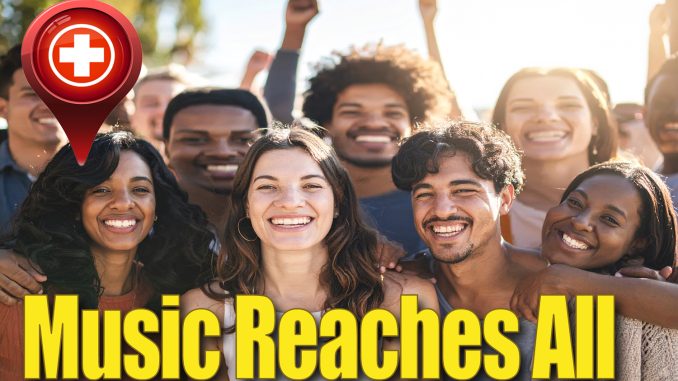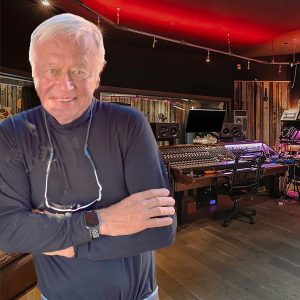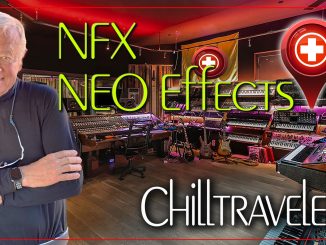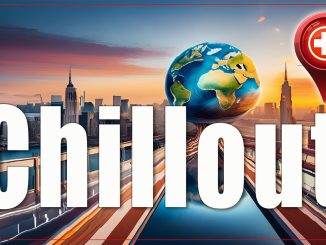

The question I get the most from people is why blend cultural regional music styles with that of chill and downtempo. Beside that Chill is my favorite style of music, the deeper reason is that I have never met a soul that does not relate to the calming and uplifting feeling people get from Chill. Any age and even dogs and cats relate to Chill. So, to me, Chill music is as much a universal language as is a smile. But, to dig deeper, do you really care what country music is from or do you just feel good listening to it?
“To me, music is not about the musician, but about how it moves people. Chill seems to cross all boundries by eliminating boundries.”
The Sonic Bridge: How Chill Downtempo Fusion Is Healing Our Fractured World
In an era where political divisions seem insurmountable and cultural misunderstandings dominate headlines, there exists a quiet revolution happening in recording studios around the globe. Music composers are crafting a new language of peace through the fusion of traditional cultural sounds with the calming embrace of downtempo and chill electronic music. This emerging movement represents more than just an artistic trend—it’s a profound statement about humanity’s capacity for unity through the universal language of music.
The Art of Cultural Sonic Diplomacy
The practice of blending regional musical traditions with downtempo electronic production has become a **sophisticated form of cultural diplomacy. When a producer takes the haunting slide guitar of Mississippi Delta blues and layers it beneath ambient pads and trip-hop beats, they’re not just creating music—they’re building bridges across centuries of cultural evolution.
Artists like Thievery Corporation have pioneered this approach for over 25 years, respectfully incorporating “tastes of international cultural styles, without ever falling into the trap of cultural appropriation”. Their founder Eric Hilton reflects: “We always wondered: with so much incredible music in the world, why would anyone limit themselves to one genre? This philosophy has created some of the most compelling examples of how electronic music can serve as a vessel for cross-cultural understanding.
The process itself is deeply meditative. Picture a composer in their studio, surrounded by samples from a Brazilian favela, field recordings of Jamaican steel drums, and the raw emotion of Delta blues recordings. As they craft these elements into a cohesive downtempo composition, they’re essentially creating sonic diplomacy—music that “gets people to see each other’s humanity, build a sense of common purpose”.
The Healing Power of Horizontal Music
Downtempo music, characterized by its atmospheric soundscapes and slower beats, provides the perfect canvas for cultural fusion. Unlike aggressive or fast-paced genres that might overwhelm listeners, the “horizontal, chilled-out” nature of downtempo creates space for contemplation and emotional processing. This genre emerged from the UK’s late-1980s Bristol scene and has evolved into a global platform for cross-cultural musical dialogue.
The beauty of combining traditional cultural elements with chill electronic music lies in its accessibility to diverse audiences. A track featuring Jamaican reggae rhythms blended with ambient textures and downtempo beats can simultaneously appeal to Caribbean music lovers, electronic music enthusiasts, and meditation practitioners. This cross-pollination creates “common ground for people who may not share the same language, beliefs, culture, or religion”.
Artists like Bonobo exemplify this approach, incorporating “complex orchestral sounds” and world music influences into jazzy electronic compositions. His work demonstrates how downtempo fusion can transcend cultural boundaries while maintaining respect for the source traditions. As one critic noted, Bonobo “breathes new life into a well-worn genre” by fearlessly exploring diverse musical territories.
From Studios to Global Stages: Music as Universal Language
 The impact of cultural-chill fusion extends far beyond individual listening experiences. Music festivals and live performances featuring these hybrid sounds create unprecedented opportunities for cultural exchange. When audiences hear traditional Brazilian bossa nova rhythms floating over ambient electronic textures, or Delta blues guitar weaving through dub-influenced downtempo beats, they’re experiencing **visceral proof that cultural differences can harmonize rather than clash.
The impact of cultural-chill fusion extends far beyond individual listening experiences. Music festivals and live performances featuring these hybrid sounds create unprecedented opportunities for cultural exchange. When audiences hear traditional Brazilian bossa nova rhythms floating over ambient electronic textures, or Delta blues guitar weaving through dub-influenced downtempo beats, they’re experiencing **visceral proof that cultural differences can harmonize rather than clash.
This phenomenon aligns with broader recognition of music’s diplomatic potential. The U.S. State Department’s Global Music Diplomacy Initiative, launched in 2023, specifically aims to “elevate music as a diplomatic tool to promote peace and democracy”. Dormer Secretary of State Antony Blinken, himself a musician, argues that music “gets people to see each other’s humanity” in ways that “no policy or speech ever could”.
The scientific community supports these observations. Research demonstrates that exposure to culturally diverse music develops empathy and global citizenship. When students encounter music that blends familiar electronic sounds with unfamiliar cultural traditions, they develop “increased appreciation and understanding of others”. This educational impact suggests that cultural-chill fusion could play a significant role in **preparing future generations for a more harmonious world.
The Technical Alchemy of Peace
Creating effective cultural-downtempo fusion requires extraordinary sensitivity and skill. Producers must understand not just the technical aspects of electronic music production, but also the cultural contexts and emotional significance of traditional music forms. The process often involves extensive research into source materials, collaboration with traditional musicians, and careful attention to avoiding appropriation while maintaining authenticity.
The technical approach typically involves layering organic instrumentation over electronic foundations. A typical track might begin with ambient pads and subtle percussion, gradually introducing traditional instruments like tabla, sitar, or steel drums.
The key is maintaining the “atmospheric sound and slower beats” that define downtempo while allowing the cultural elements to breathe and maintain their identity.
Modern production techniques enable unprecedented creative possibilities. Digital audio workstations allow producers to manipulate traditional recordings in ways that enhance rather than obscure their cultural significance. A Brazilian composer might record authentic favela percussion, then process it through ambient reverbs and delays that transform the sounds into otherworldly textures while preserving their rhythmic essence.
Breaking Down Barriers, Building Up Understanding
 The most profound aspect of cultural-downtempo fusion lies in its ability to neutralize cultural prejudices through emotional engagement. When listeners become absorbed in beautiful music that seamlessly blends their familiar cultural sounds with those from distant traditions, they experience what UN Secretary-General Kofi Annan described as music’s power to “leap across language barriers and unite people of quite different cultural backgrounds”.
The most profound aspect of cultural-downtempo fusion lies in its ability to neutralize cultural prejudices through emotional engagement. When listeners become absorbed in beautiful music that seamlessly blends their familiar cultural sounds with those from distant traditions, they experience what UN Secretary-General Kofi Annan described as music’s power to “leap across language barriers and unite people of quite different cultural backgrounds”.
This unifying effect occurs because downtempo fusion creates safe emotional spaces for cultural encounter. The relaxed tempo and ambient textures reduce anxiety while the familiar electronic elements provide comfort zones for listeners who might otherwise feel intimidated by foreign musical traditions. Within this supportive sonic environment, audiences become more receptive to new cultural experiences.
The ripple effects extend into broader social consciousness. As ethnomusicologist Natalie Sarrazin notes, exposure to multicultural music “creates a more inclusive society and raising awareness of lived experiences other than our own”. In our current era of political polarization, these musical bridges offer alternative pathways for human connection that bypass ideological divisions.
A Call for Global Chill
Perhaps it’s time for world leaders to take seriously the suggestion that they should “chill out”—not as a dismissive command, but as an invitation to explore music’s proven capacity for diplomatic breakthrough The success of programs like the U.S. Jazz Ambassadors, which used music to build cultural understanding during the Cold War, demonstrates that musical diplomacy can succeed where traditional diplomacy fails.
Imagine if international summits included chill sessions featuring cultural-downtempo fusion artists or even just sound tracks. Picture world leaders experiencing the profound peace that emerges when Delta blues guitar harmonizes with Brazilian percussion over ambient electronic textures, or when Jamaican reggae basslines support Indian classical melodies in downtempo arrangements. Such experiences might create the emotional openness necessary for political breakthrough.
The artists creating these sonic bridges understand something that politicians often miss: true unity doesn’t require cultural homogenization. Instead, it emerges when diverse traditions are given space to coexist and complement each other. In downtempo fusion, a Delta blues guitar doesn’t overpower Brazilian cuíca percussion—they enhance each other, creating something more beautiful than either could achieve alone.
The Future of Fusion
As global connectivity increases and cultural boundaries continue blurring, the demand for music that reflects our multicultural reality will only grow]. The artists pioneering cultural-downtempo fusion are not just creating entertainment—they’re architecting the soundtrack for a more unified world.
The genre’s continued evolution promises even more sophisticated approaches to cultural integration. Emerging artists are exploring combinations that might have seemed impossible just decades ago: West African polyrhythms with Nordic ambient textures, Middle Eastern scales with Latin American percussion, all unified under the gentle embrace of downtempo production.
These musical explorers are proving that in a world too often defined by what divides us, there exists an infinite potential for harmony. When traditional cultural sounds meet the calming embrace of downtempo electronic music, something magical happens—boundaries dissolve, prejudices fade, and we remember our shared humanity. In studios around the world, composers are creating more than just music; they’re crafting the soundtrack for global peace, one chill beat at a time.
Bob




Be the first to comment